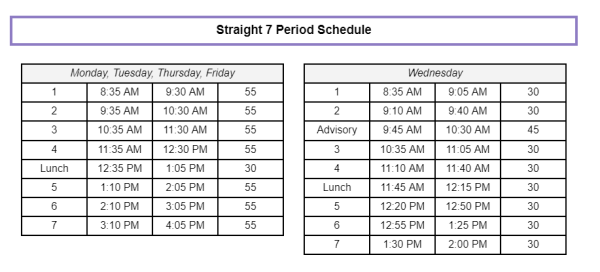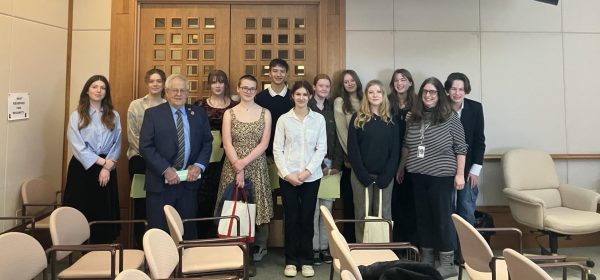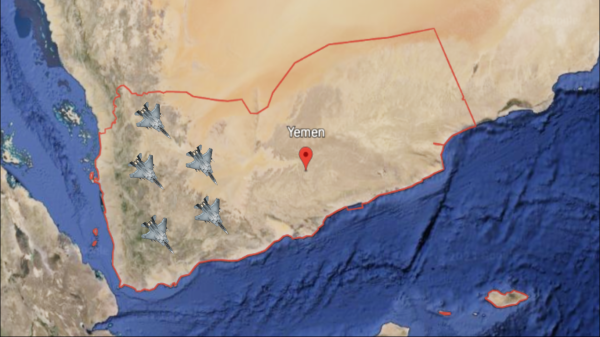Secondhand Shopping and Its Secondhand Effects
November 30, 2022
It can’t be denied that in the past few years, secondhand shopping has gained mass popularity, at least according to a Sept. 14 CNBC report. Many seem to believe it’s nothing more than a trend, with the rise of vintage clothing popularity. However, it seems that we are currently in a time when secondhand shopping is quite the opposite of a trend. Thrift stores are the place to access an almost never ending array of clothes from a diverse spread of people and designers and, more importantly, at affordable prices.
The gain in popularity may also be due to a new way of expressing individualism, as well as the growth of fast fashion and people’s hatred for its human and environmental exploits. Thrifting may be the key to how almost everyone can develop a unique style by taking time-favored inspiration and clothing from all different eras, rather than feeding into the wide-scale production of synthetic, month-long-lasting clothing items.
Secondhand shopping rose in popularity especially following the pandemic, presumably due to inflation and the need to access clothing at fair prices. CNBC reporter Jessica Dickler has claimed that people who thrift save $1,760 a year on average, according to a report by CouponFollow. And as online shopping has grown, there have emerged both online secondhand stores as well as the dreaded fast fashion online stores.
Perhaps due to quarantine boredom, “retail therapy” – a practice in which material goods cause a temporary burst of dopamine, encouraging splurges on clothing and accessories – became more common. Fast fashion prices tended to be lower; however, this was mostly due to the cheap synthetic material Lycra, and viscose, both of which take hundreds of years to decompose but also fall out of use as soon as the material wears and stretches. These materials account for approximately 35 percent of all microplastics in the environment, according to the Princeton Student Climate Initiative.
People have begun looking at the sources of the clothing they are buying, unmasking some well-kept secrets of its repercussions. Fast fashion fills landfills, consumes high amounts of energy, pollutes the air, damages marine ecosystems, and is often believed to use child labor (though manufacturers deny this). While these wasteful and exploitative practices are not unique to fast fashion, fast fashion manufacturers produce more clothing quicker, hence its poor quality and materials.
One of the best parts of thrifting is stumbling upon quality goods, which was a more common experience in past decades. Unfortunately, cheap clothes produced by companies such as Shein have begun to infiltrate thrift stores. According to Maria Rina Locsin from the University of the Philippines in Baguio City, “The single most important driver that fuels the [secondhand clothing trade] is the fast turnover rate of fashion in the world’s capitals, which unleashes a huge amount of castoffs for the secondary market.¨
But people who care have begun boycotting industry giants such as Shein and H&M and have turned to thrifting as the perfect alternative for a diverse, cheap selection of clothing.
Self-expression seems to be especially encouraged in Santa Fe, an artsy town with a wide array of people from diverse backgrounds that allows expression in ways that aren’t mirrored elsewhere. Santa Fe offers many choices for thrifting.
Local secondhand stores such as Double Take, Buffalo Exchange, The Cat, and Act 2 are independently owned and have relatively higher prices due to selective consignment. But the hugely popular Savers has a surplus of donated clothes, which allows their prices to stay relatively low and steady. A worker at Savers reported that they restock every day. Though good clothes go quickly, Savers offers a good place to both donate and to buy from.
The existence of the thrifting trend only begs the question, Why? Why do people who value individualism still want to join a group movement? The reason a trend starts is simply through mimicry. Just as art is born of mimicry, or more accurately inspiration, so is fashion. Thrifting is a seemingly never ending cycle of new items, sometimes birthing new movements.
With seemingly unlimited sources of secondhand clothing, we can follow trends and find favorite pieces that are still hand-picked and original, solidifying teenagers’ growing self-expression through creative means. And with thrifting, as Santa Fe High student Erin Logue says, “You pay less, and you get more.”
(Photos by Hannah Clinton.)












